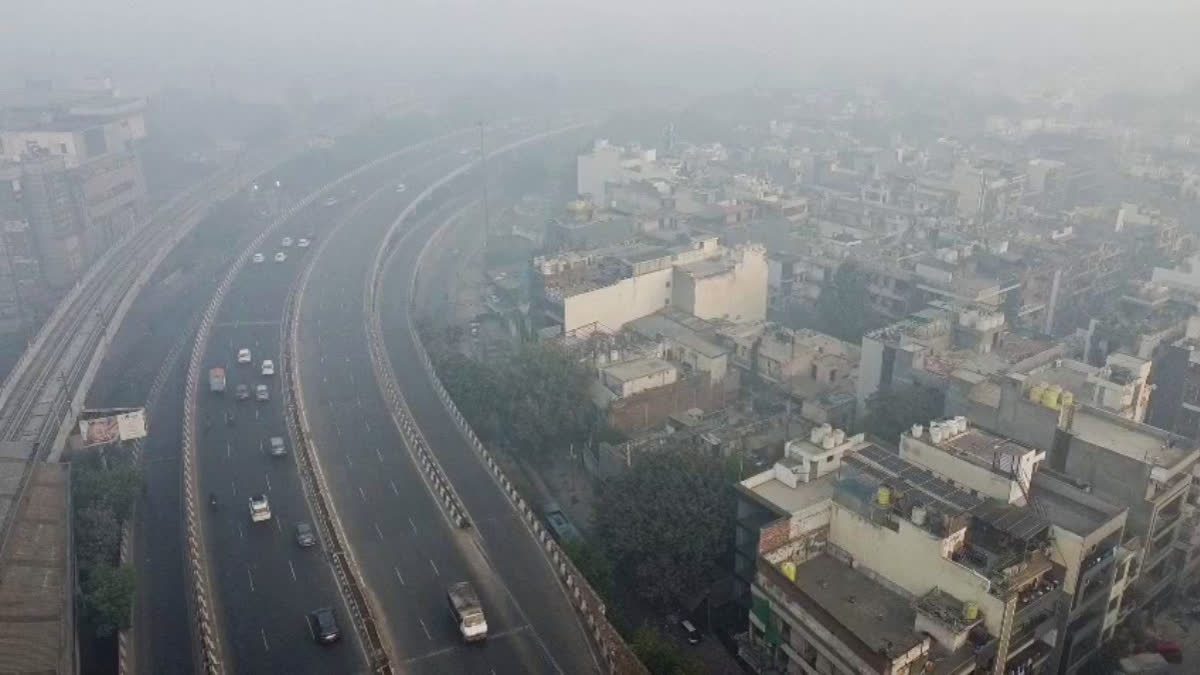New Delhi: Air quality in New Delhi plummeted further on Monday morning, with the AQI reaching the ‘severe’ category at 415, according to data from the Central Pollution Control Board (CPCB). This marks a worrying trend, as the AQI averaged 409 on Sunday and 370 on Saturday.
The India Meteorological Department (IMD) has predicted light rains for Monday, which is likely to clear some of the smog in the national capital. The primary pollutant driving this hazardous air quality in the city is PM2.5, fine particulate matter measuring 2.5 micrometres or smaller.
These particles can penetrate deep into the lungs, causing severe respiratory and cardiovascular complications. Prolonged exposure can lead to chronic health conditions, particularly for vulnerable groups such as children, the elderly, and individuals with pre-existing conditions.
AQI from 0-50 is considered 'good', 51-100 ‘satisfactory’, 101-200 'moderate', 201-300 'poor', 301-400 ‘very poor’, and 401-500 ‘severe’. On Sunday, 37 out of 39 monitoring stations across Delhi reported AQI levels in the ‘severe plus’ category, with some areas recording alarming levels as high as 474.
Weather Conditions and Health Risks
The India Meteorological Department (IMD) has forecast cloudy skies with light rain on Monday, which may provide temporary relief from pollution levels. The maximum and minimum temperatures are expected to settle at 20°C and 7°C, respectively. On Sunday, Delhi recorded a maximum temperature of 24.1°C, three notches above normal, while the minimum temperature stood at 7.3°C, a notch below normal. Humidity levels ranged between 68% and 97%, and fog enveloped the city in the morning.
While light rain could help settle pollutants, experts warn that the current weather conditions, low temperatures and high humidity, could exacerbate pollution by trapping particulates closer to the ground.
Stringent Measures Under Stage IV of GRAP
Delhi remains under Stage IV of the Graded Response Action Plan (GRAP), which enforces stringent anti-pollution measures to curb emissions. Key steps include a complete ban on construction and demolition activities and restrictions on non-essential polluting trucks entering the city.
In addition, the education sector has been significantly impacted. Schools in Delhi and neighbouring regions such as Gurugram, Faridabad, Ghaziabad, and Gautam Buddh Nagar have shifted to a hybrid mode of learning for students in grades VI to IX and XI. Under this system, classes are held both online and offline to minimize children’s exposure to hazardous air.
For younger students up to grade V, hybrid learning has already been implemented under Stage III of GRAP. However, students in grades X and XII, who are preparing for crucial board examinations, are required to attend in-person classes.
Public Advisory
Authorities have urged residents to limit outdoor activities, especially during early mornings and evenings when pollution levels peak. The use of N95 masks is recommended, and air purifiers are advised for indoor spaces. Vulnerable groups, including children, the elderly, and those with pre-existing conditions, are advised to remain indoors as much as possible.
As Delhi grapples with severe air pollution, authorities are emphasizing collective responsibility and strict adherence to GRAP measures to mitigate the crisis.



